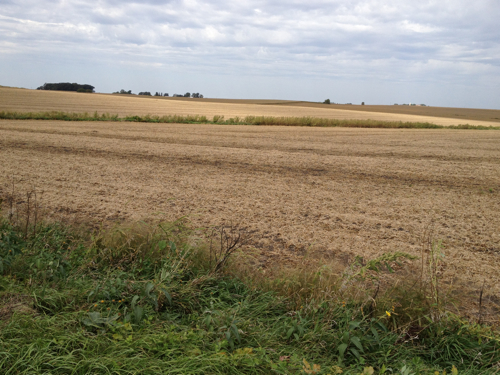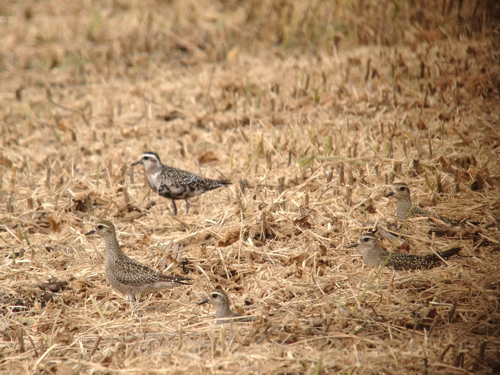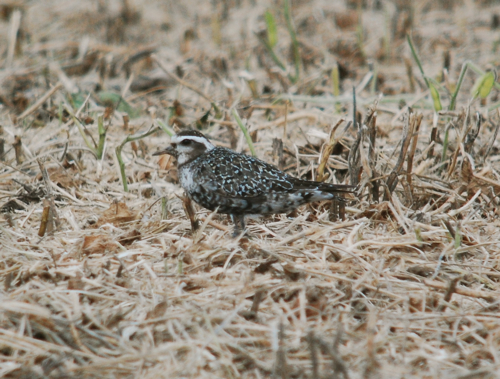One of the joys of migration is that you never when something is going to show up. When I'm out doing my surveys, I have my usual suspects of species but every now and then a surprise hits.

As I was driving between survey points, I passed this field and a small flock fluttered away from the road towards the center. I knew they were shorebirds, but not exactly certain what they were. I pulled over and got my scope out.

It was a flock of plovers in non-breeding plumage. And when they flew, there was no black in their "wing pits" that you would see on a black-bellied plover in non breeding plumage, so these were American golden-plovers. The birds soon hunkered down into the the soybean stubble and it was amazing how well their plumage mixed in with that. I wondered if they just blew in from their northern migration the night before and were hoping to catch a nap. The above was a shot taken with my iPhone 4s with my spotting scope.

This was taken with my Nikon D40 SLR and spotting scope. Some of the birds were still on high alert. Not the bird in front with a cocked head towards the sky? I looked up and that plover had its eye on a passing Cooper's hawk, high in the clouds.

These birds have one of the longest migrations out there. According to Audubon, American golden-plovers fly offshore from the east coast of North America and travel nonstop over the Atlantic Ocean to South America. Individuals may go more than 3,000 miles in one flight. Juveniles and birds blown off track will move through river valleys and I wasn't too far from the Mississippi River when I got these shots. Amazing to think about how far these birds will go.
